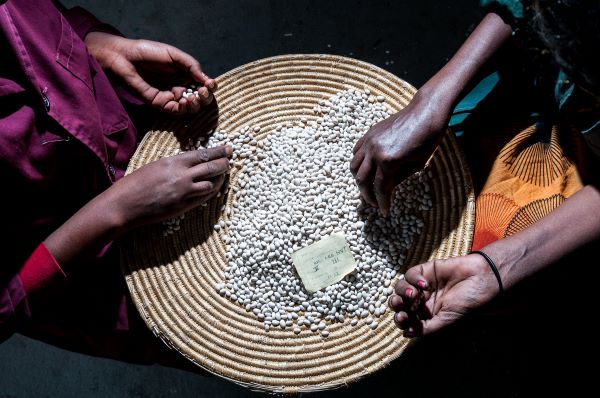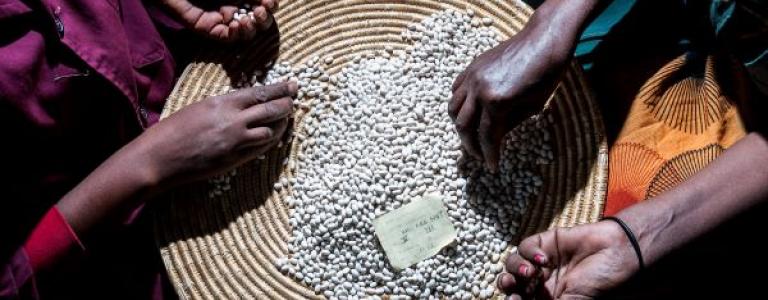We Can Prevent a COVID-19 Hunger Crisis if We Look Back and Learn
The world now faces the risk of a dramatic rise in hunger, barely 12 years after the devastating food price crisis. What can be learned from the past?
With the global economy reeling from COVID-related measures, the world now faces the risk of another dramatic rise in hunger, barely 12 years after the devastating food price crisis of 2007–2008.
As societies prepare themselves for the next steps in this pandemic, it makes sense to ask what can be learned from the past and how we can do better.
The 2007–2008 food price crisis was the worst shock to food markets since the early 1970s. Soon after the rise in food commodity prices, the 2008 global financial crisis created a sharp economic recession. These events caused hunger rates to soar.
The hunger crisis then... and now
The hunger crisis now emerging differs both in its origins and its spread. The high and volatile food prices of 2007—2008 and resulting hunger spike was caused by poor harvests in major food exporters, low global stocks, surging energy prices, and an unexpected jump in demand caused by biofuel subsidies.
In contrast, the COVID-19 pandemic occurred at a moment when global food stocks are plentiful, harvests are expected to be large, and energy prices—particularly oil prices—are in free fall. Meanwhile, demand has been decimated by an economic freeze.
The measures put in place to slow the spread of the virus, while essential, have caused billions of people to lose their income. The widely predicted economic recession could last for years. For those employed in the informal sector—in other words, for most people already living in poverty in low- and middle-income countries—little or no formal support is likely to be forthcoming.
The International Food Policy Research Institute estimates that an extra 148 million people will fall into extreme poverty if the global economy shrinks by 5% this year. It is this population’s access to food that most urgently needs to be protected.
An extra 148 million people will fall into extreme poverty if the global economy shrinks by 5% this year. It is this population’s access to food that most urgently needs to be protected.
If loss of access to food is the biggest driver of immediate concern to food security during the pandemic, other threats are not far behind. Instability has shaken local, regional, and international supply chains. Locally, many places have seen panic purchases and empty shelves, coupled with significant waste due to abrupt market closures. In many places, farmers have been cut off from both their fields and their local markets due to physical distancing measures.
Other choke points have emerged at distribution and food processing centres where workers have gotten sick, at borders and ports where paperwork has increased and new protocols have been imposed, and at airports where grounded flights are no longer available to carry fresh produce to import markets. In richer countries, highly specialized food value chains suffered enormous losses and waste because their market in the foodservice sector shut overnight.
Both differences and similarities can offer important lessons
The differences between the two crises matter, but so do the commonalities. The panicked responses of markets and governments, while familiar, are also largely avoidable. For example, an increasing number of countries have enacted or are considering export restrictions, something that happened a lot in 2007–2008. The action destabilizes markets, provokes wealthier food importers into panic purchases, and punishes the poorest importing countries with higher prices.
Instead, several responses developed out of the 2007–2008 experience offer positive examples for today’s policy -makers. These include:
- Extensive and innovative use of social protection programs, especially those that take into account gender-based differences.
- The G20’s Agricultural Market Information System (AMIS), housed at the Food and Agriculture Organization of the United Nations (FAO) and charged with ensuring transparency and supply forecasting capacity for major cereal crops globally.
- The revamped UN Committee on World Food Security, which provides a forum for food security debate and negotiation by engaging governments, civil society, philanthropic organizations, and the private sector.
- Financial instruments that provide a voice in their decision-making to the communities affected by international financial project funding, such as the Global Agricultural Food Security Programme (GAFSP), whose funding is up for renewal in June.
These measures have had a significant positive effect on strengthening food systems and facilitating global coordination and action. Their demonstrated worth is highly relevant in this new crisis. Although export bans and restrictions have emerged, so far, they remain relatively limited. Many governments have also moved quickly to adapt and extend social protection programs, such as cash transfers, to keep money in people’s pockets.

Food security is realized when people are free from the fear of hunger, not just free from immediate need. A recent poll of 12 countries in sub-Saharan Africa shows that 80% of responders reported they had worried about not having enough to eat in the past seven days. To protect food security, we need to protect the next harvest, as well as the storage, processing, and distribution systems to bring that harvest to consumers. The climate crisis was already confronting us with the fact that dramatic change to our lives and work was coming, ready or not. The pandemic is a powerful taste of just how much change can happen in a very short time, with impacts that will extend for years.
Governments coordinated their actions in the aftermath of the 2007–2008 crisis and built institutions that have proven their worth. Facing urgent human need and equipped with unprecedented sums of public money, it is time to do more. Three principles should guide public action: redistribution that protects everyone’s access to a healthy diet; risk management that rebalances efficiency with greater diversity in food value chains; and smarter use of technology and knowledge to limit the harm food causes the environment and instead enhance its contribution to a healthy planet. This is how we can ensure public investment goes toward "building back better."
You might also be interested in
Good COP? Bad COP?: Food systems at COP29
The 29th United Nations Climate Conference (COP 29) in Baku failed to build on the notable progress made on food systems at COP 28. However, it wasn't all doom and gloom.
The Responsible Agricultural Investment Tool for Agribusiness and Case Studies
This report summarizes a collaboration to support agribusinesses in complying with principles of responsible investment in agriculture and food systems.
Promoting the Development of Agricultural Cooperatives
Governments in the Global South should promote agricultural cooperatives to boost smallholder access to fair markets, finance, and climate resilience.
Adding Fuel to the Fire: How export restrictions can exacerbate climate change’s impacts on global food security
Higher temperatures will likely reduce agricultural yields and production in most countries, raising global food prices and worsening food security. Avoiding export restrictions is crucial.
